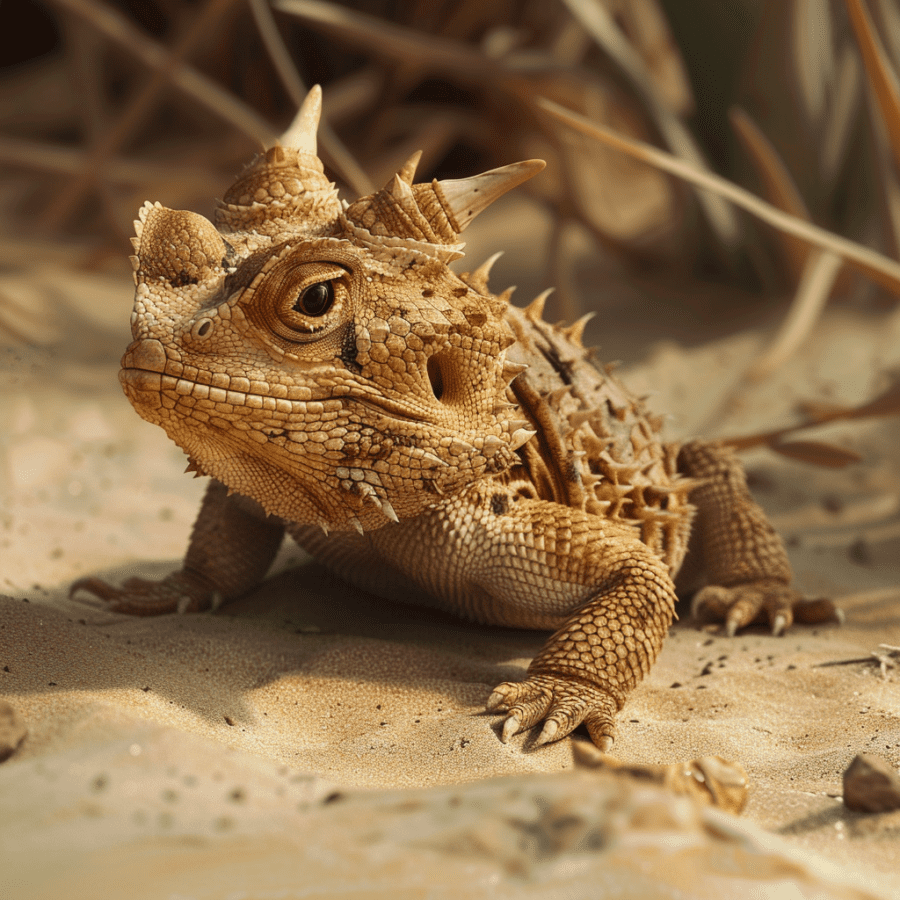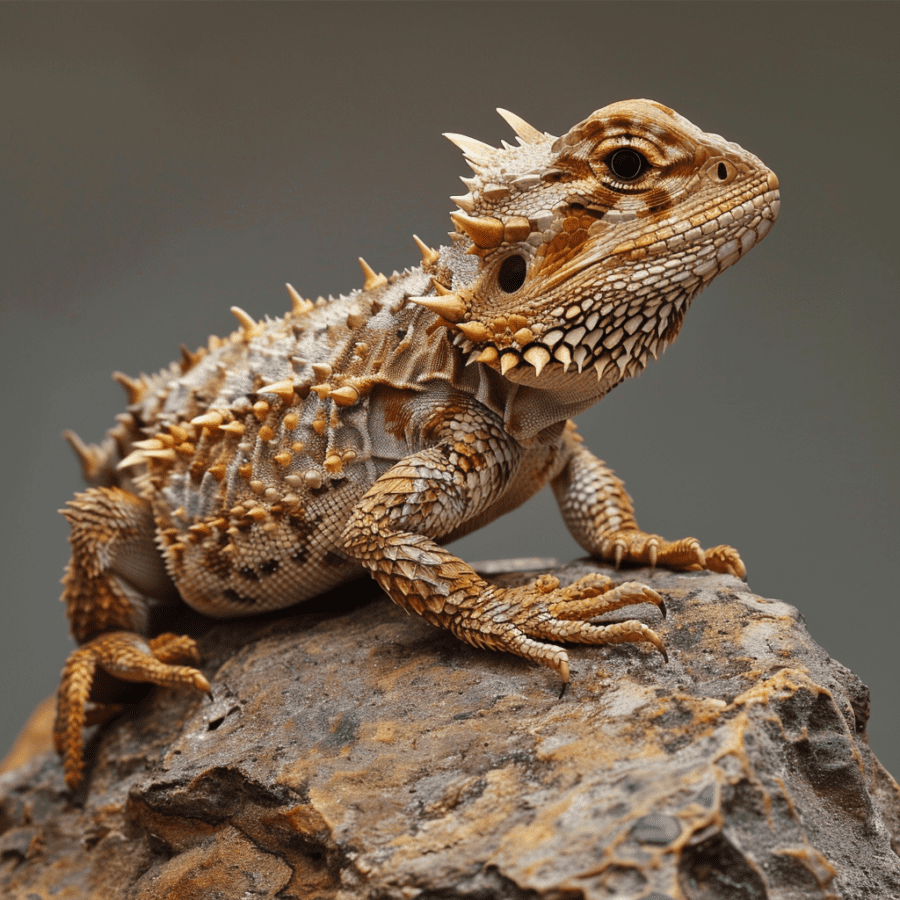Share the post "Halting the Texas Horned Lizard Decline"
Imagine a world where the Texas horned lizard, a creature once abundant across the southern United States to northern Mexico, becomes more of a myth than a reality. This year alone, a staggering 195 of these reptiles have been released back into the wild, a number surpassing all previous years combined. Yet, even with these efforts, their populations continue to dwindle.
The exact cause of this decline remains a mystery, but the loss of habitat from development is a prime suspect. These lizards are now listed as threatened, meaning it’s illegal to buy, sell, or remove them from the wild. But, without substantial conservation efforts, their decline might continue unabated. As you read on, you’ll discover the desperate fight to save the Texas horned lizard and what you can do to help.

Factors Behind the Decline
The rapid dwindling of the Texas horned lizard population highlights a stern ecological crisis. Digging deeper into the causes uncovers multiple factors responsible for this decline. We’ll expose three leading factors in the following sections.
Habitat Loss and Fragmentation
The Texas horned lizards once roamed freely across a vast stretch from the southern United States to northern Mexico. Over time, but, a growing human footprint has swept through these landscapes, causing significant changes.
- Ever-increasing roads and land clearing for developmental activities disrupt their habitat. This fragmentation leaves them without sufficient space to thrive.
- Harvester ants, a prime food source for the lizards, experience a similar fate due to pesticides, leading to a food shortage for our spiked friends.
- The continued loss of safe habitat due to the actions of feral domestic dogs and cats further depletes their population.

Invasive Species Threats
Another critical front in the fight for lizard survival is the rise of invasive species.
- Fire ants, non-native residents of suburban neighborhoods, compete with the lizards’ primary food source – harvester ants.
- These fiery invaders also pose a direct threat by attacking the lizards’ nests and consuming their eggs.
- You can curb this threat by individually treating each mound without pesticides. Drown ant mounds using a bucket of hot water mixed with a smidgen of dish soap, digging the liquid in with a shovel.
Climate Change Impact
Finally, climate change stands as an unseen but looming threat.
- Migration of invasive ant species from Central and South America, accelerated by the changing climate, overcrowds the habitat and food supply of the lizards. Fire ants, in particular, prove to be detrimental, as previously discussed.
Remember, all these factors are intertwined and exert collective pressure on the lizard population. As you step out into your yard today, let the sight of native plants, free of pesticide-treated soil, remind you of the need for a healthier ecosystem. Take the matter into your hands to contribute to ongoing conservation efforts. Every bit helps in the fight for survival of the Texas horned lizards.

Conservation Efforts
Protection Status and Laws
Texas horned lizards are currently at risk due primarily to habitat loss and the invasion of fire ants, an invasive species proving deadly to baby lizards. But there’s a silver lining. Several hardworking conservationists and lawmakers aim to lend this unconventional creature a helping hand. Congress recently introduced the Recovering America’s Wildlife Act (RAWA), a promising piece of legislation aiming to provide substantial funding for conservation efforts.
Although RAWA didn’t pass, it highlighted an earnest determination to support overlooked conservation missions. Among them, a project to restore the Texas horned lizard populations was high on the list.
Conservation Programs and Initiatives
In the battle to save the Texas horned lizard, several organizations stand at the forefront. For instance, the Conservation Wrangler program and Texan by Nature are investing significant effort to proliferate Texas horned lizards throughout the state. These organizations collaborate with local conservation partners and the San Antonio Zoo, employing clever techniques to help augment the lizard populations.
One inspired approach is the Texas Horned Lizard Reintroduction Project. In this process, the organizations share best practice strategies, case studies, and habitat management techniques statewide. This wealth of knowledge propels science-based conservation efforts, benefiting not only the horned lizards but also landowners, businesses, and environmental groups.
Surprisingly, dogs play a role in this conservation story as well! Partnering with Paul Bunker, the owner of Chiron K9, a novel Horned Lizard Detection Canine Network got created. These scent-trained dogs, skillfully identifying traces of Texas horned lizards, provides an efficient post-release monitoring method. The technique adds potency and success to the conservation efforts, as this network could pinpoint the delicate existence of these creatures in chosen habitats.
Putting kayaks on the water isn’t the only way you can help. Participate right at home! A few recommended actions include treating fire ant mounds without harmful pesticides, supervising pets outdoors, and landscaping with native plants. Every seemingly small action can make a world of difference in the larger fight against extinction. With all the concerted efforts, there’s hope that these Texas icons will return stronger soon.
Share the post "Halting the Texas Horned Lizard Decline"
Christian Linden is a seasoned writer and contributor at Texas View, specializing in topics that resonate with the Texan community. With over a decade of experience in journalism, Christian brings a wealth of knowledge in local politics, culture, and lifestyle. He holds a Bachelor's degree in Communications from the University of Texas. When he's not writing, Christian enjoys spending weekends traveling across Texas with his family, exploring everything from bustling cities to serene landscapes.











